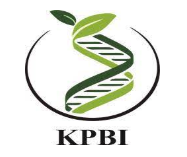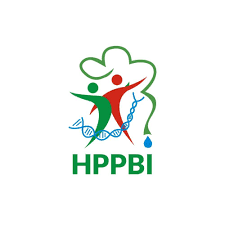ANALISIS POLA NATURE OF MODELS (NOM) DALAM BUKU SISWA BIOLOGI KELAS X
DOI:
https://doi.org/10.15575/bioeduin.v11i1.12080Keywords:
model types, characteristics, illustrations, Biology booksAbstract
This research is entitled "Analysis of Nature of Models (NoM) Patterns in the Biology Student Book Class X". This study aims to determine the pattern of using the type of model and the characteristics of Nature of Models (NoM) contained in the Biology class X student book. The sample in this study was the dominant book used in SMA N throughout Magelang Regency in the class X student book. to model types and characteristics of Nature of Models. The data obtained were then analyzed using descriptive analysis. The results showed that the type of model which consisted of 8 types, the type of scale was found more, namely as much as 113 or 64% compared to other types of models. Inversely proportional to the type of mathematical model that is not found in student books. While the characteristics of Nature of Models in the illustration category, the structural model sub-category dominates as much as 72.31%, the complexity aspect of the fact sub-category dominates as much as 77.40%, the low abstraction category dominates as much as 74.01%, and all models found are in accordance with learning objectives. The results of the analysis of the Nature of Models pattern in the Biology class X student book are in accordance with the characteristics of Biology.
Â
Abstrak. Penelitian ini berjudul “Analisis Pola Nature of Models (NoM) dalam Buku Siswa Biologi Kelas Xâ€. Penelitian ini bertujuan untuk mengetahui pola penggunaan tipe model dan karakteristik Nature of Models (NoM) yang terdapat dalam buku siswa Biologi kelas X. Sampel dalam penelitian ini adalah buku yang dominan digunakan di SMA N se-Kabubaten Magelang pada buku siswa kelas X. Analisis difokuskan terhadap tipe model dan karakteristik Nature of Models. Data yang diperoleh selanjutnya dianalisis menggunakan analisis kualitatif. Hasil penelitian menunjukan bahwa tipe model yang terdiri dari 8 tipe, tipe skala lebih banyak ditemukan, yaitu sebanyak 113 atau 64% dibandingkan tipe model lainnya. Berbanding terbalik dengan tipe model matematik yang tidak ditemukan dalam buku siswa. Sedangakan karakteristik Nature of Models pada kategori ilustrasi, subkategori model struktural lebih mendominasi sebanyak 72,31%, aspek kompleksitas subkategori fakta mendominasi sebanyak 77,40%, aspek abstraksi rendah lebih mendominasi sebanyak 74,01%, dan seluruh model yang ditemukan telah sesuai dengan tujuan pembelajaran. Hasil analisis pola Nature of Models dalam buku siswa Biologi kelas X tersebut sesuai dengan ciri-ciri Ilmu Biologi.
References
Afifah, T., Prasetyo, A. P. B., & Lisdiana, L. (2016). Buku Guru Dan Buku Siswa Terintegrasi Literasi Sains Untuk Menumbuhkan Kesadaran Konsumsi Makanan Sehat. Journal of Innovative Science Education, 5(1), 36-44.
Anwar, R. (2014). Hal-hal yang mendasari penerapan Kurikulum 2013. Humaniora, 5(1), 97-106.
Bamberger, Y. M., & Davis, E. A. (2013). Middle-school science students’ scientific modelling performances across content areas and within a learning progression. International Journal of Science Education, 35(2), 213-238.
Baswedan, A. R. (2014, December). Gawat darurat pendidikan di Indonesia. In The Emergency of Indonesian Education]. A paper delivered at the meeting between Ministry and Head of Education Offices Indonesia-wide in Jakarta, on December (Vol. 1).
Campbell NA, JB Reece, LA Urry, ML Cain, SA Waserman, PV Minorsky & RB Jackson. 2010. Biologi Edisi Kedelapan Jilid 2. Jakarta: PT. Erlangga.
Danusso, L., Testa, I., & Vicentini, M. (2010). Improving prospective teachers’ knowledge about scientific models and modelling: Design and evaluation of a teacher education intervention. International Journal of Science Education, 32(7), 871-905.
Fatmawati, S. (2013). Perumusan Tujuan Pembelajaran Dan Soal Kognitif Berorientasi Pada Revisi Taksonomi Bloom Dalam Pembelajaran Fisika. Edu Sains: Jurnal Pendidikan Sains dan Matematika, 1(2).
Fitriyani, N. L., Probosari, R. M., & Suciati, S. (2018). Analisis Buku Ajar Biologi Kelas X Semester Ganjil Berdasarkan Kategori Literasi Sains Chiappetta Dan Fillman. Jurnal Biotek, 6(2), 142-151.
Gobert, J. D., & Pallant, A. (2004). Fostering students' epistemologies of models via authentic model-based tasks. Journal of Science education and Technology, 13(1), 7-22.
Gogolin, S., & Krüger, D. (2018). Students' understanding of the nature and purpose of models. Journal of Research in Science Teaching, 55(9), 1313-1338.
Harrison, A. G. (2001). How do teachers and textbook writers model scientific ideas for students?. Research in science education, 31(3), 401-435.
Huberman, Miles, dan Saldana. 2014. Analisis Data Kualitatif, Jakarta: Universitas Indonesia.
Jaber, L. Z., & BouJaoude, S. (2012). A macro–micro–symbolic teaching to promote relational understanding of chemical reactions. International Journal of Science Education, 34(7), 973-998.
JONG, J. P., CHIU, M. H., & CHUNG, S. L. (2015). The use of modelingâ€based text to improve students' modeling competencies. Science Education, 99(5), 986-1018.
Islam, S. (2017). Karakteristik pendidikan karakter; menjawab tantangan multidimensional melalui implementasi Kurikulum 2013. Jurnal Edureligia, 1(2), 89-100.
Nurbaeti, I. (2015). Analisis Kualitas Representasi Visual Bahan Ajar Paket Biologi Sma Kelas Xi Kurikulum 2013 Pada Konsep Sistem Koordinasi (Doctoral dissertation, IAIN Syekh Nurjati Cirebon).
Oh, P. S., & Oh, S. J. (2011). What teachers of science need to know about models: An overview. International Journal of Science Education, 33(8), 1109-1130.
Prasetyo, T. A., Maharta, N., & Viyanti, V. (2014). Pengembangan Buku Siswa Dengan Pendekatan Scientific Berbasis Multirepresentasi Materi Impuls Dan Momentum. Jurnal Pembelajaran Fisika, 2(4).
Roshayanti, F. (2002). Analisis Fungsi Representasi Materi Subjek Pespirasi Sel pada Buku Teks Biologi Umun Terhadap Materi Subjek Metabolisma pada Buku Teks Anatomi Fisiologi Tubuh Manusia. Tesis tidak diterbitkan, Bandung: Sekolah Pascasarjana Universitas Pendidikan Indonesia.
Rosnita, R. Rosnita. 2011: Standar Pendidikan untuk Calon Guru Sains: Pedagogi Materi Subjek sebagai Sarana Pengembangan Pengetahuan Konten Pedagogi Calon Guru. Jurnal Cakrawala Kependidikan, 9(2), 218592.
Schwarz, C. V., Reiser, B. J., Davis, E. A., Kenyon, L., Achér, A., Fortus, D., ... & Krajcik, J. (2009). Developing a learning progression for scientific modeling: Making scientific modeling accessible and meaningful for learners. Journal of Research in Science Teaching: The Official Journal of the National Association for Research in Science Teaching, 46(6), 632-654.
Sudarisman, S. (2015). Memahami hakikat dan karakteristik pembelajaran biologi dalam upaya menjawab tantangan abad 21 serta optimalisasi implementasi kurikulum 2013. Florea: Jurnal Biologi dan Pembelajarannya, 2(1).
Sugiyono. 2018. Metode Penelitian Pendidikan Kuantitatif, Kualitatif, dan R&D. Bandung: Alfabeta.
Swanepoel, S. (2010). The assessment of the quality of science education textbooks: Conceptual framework and instruments for analysis (Doctoral dissertation, University of South Africa).
Treagust, D. F., Duit, R., & Fischer, H. E. (Eds.). (2017). Multiple representations in physics education (Vol. 10). New York: Springer.
Werner, S., Förtsch, C., Boone, W., von Kotzebue, L., & Neuhaus, B. J. (2019). Investigating how German biology teachers use three-dimensional physical models in classroom instruction: a video study. Research in Science Education, 49(2), 437-463.
Widodo, A. (2005). Taksonomi Tujuan Pembelajaran. Didaktis, 4(2), 61-69.
Downloads
Published
How to Cite
Issue
Section
Citation Check
License
Authors who publish in Jurnal BIOEDUIN agree to the following terms:
- Authors retain copyright and grant the journal right of first publication with the work simultaneously licensed under a Attribution-ShareAlike 4.0 International (CC BY-SA 4.0) License that allows others to share the work with an acknowledgment of the work's authorship and initial publication in this journal.
- Authors are able to enter into separate, additional contractual arrangements for the non-exclusive distribution of the journal's published version of the work (e.g., post it to an institutional repository or publish it in a book), with an acknowledgment of its initial publication in this journal.
- Authors are permitted and encouraged to post their work online (e.g., in institutional repositories or on their website) prior to and during the submission process, as it can lead to productive exchanges, as well as earlier and greater citation of published work (See The Effect of Open Access).








